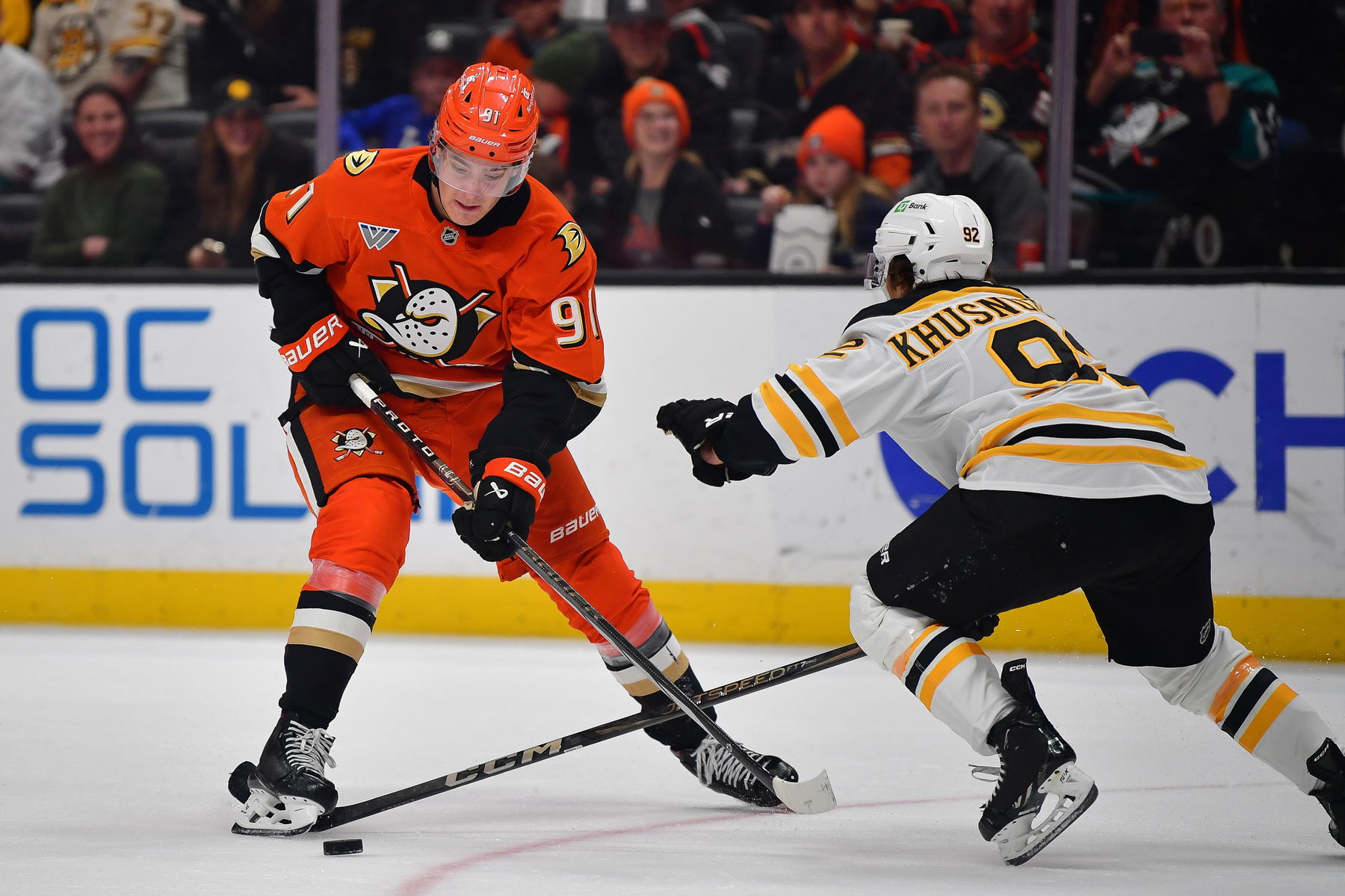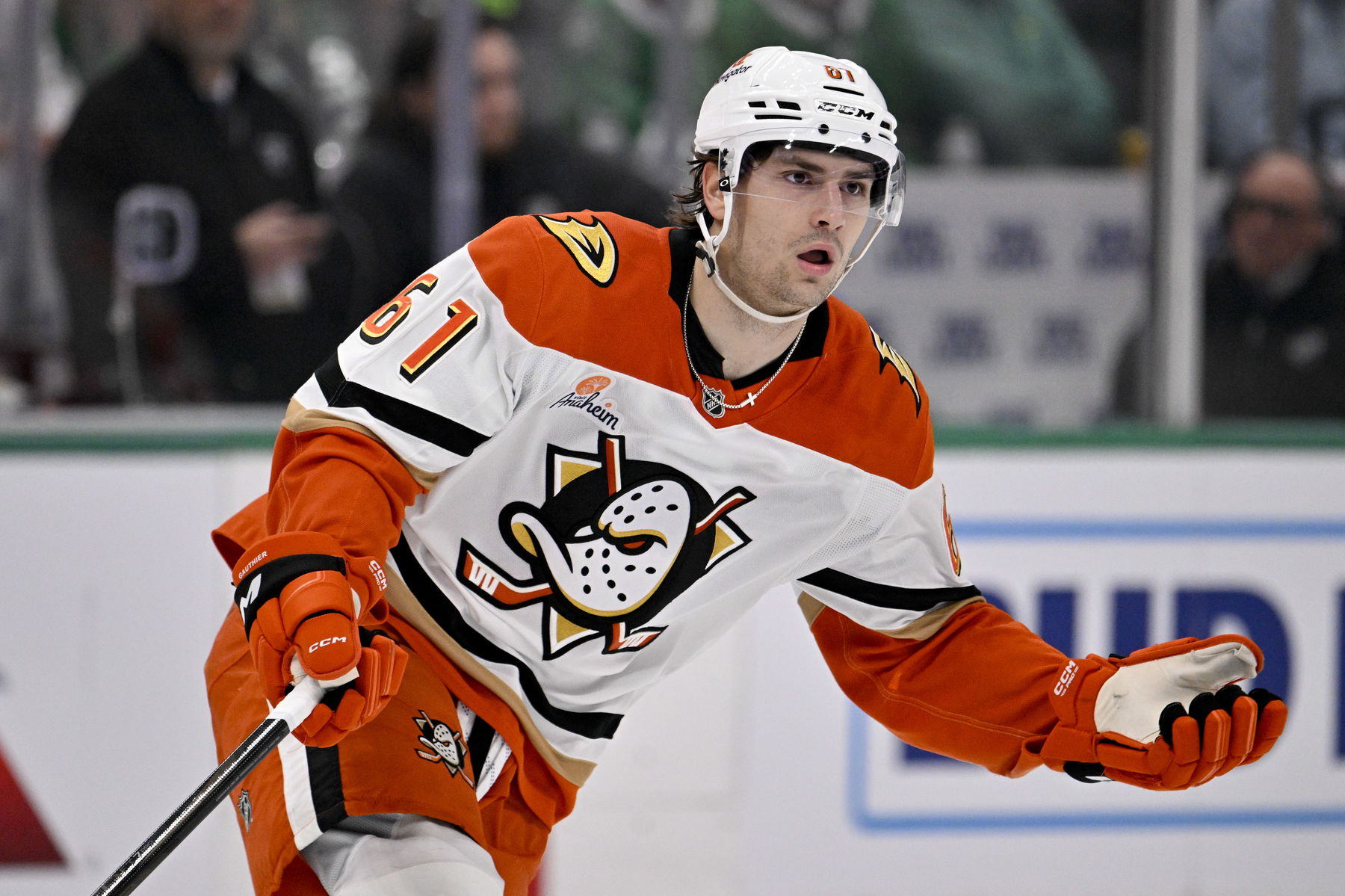

Down the stretch of the 2023-24 season and in the Anaheim Ducks final three games specifically, rookie center Leo Carlsson was tasked with contributing to his team as a penalty killer. In those three games, the Ducks surrendered four power play goals, but in his 4:51 of shorthanded TOI, Carlsson wasn’t on the ice for a power play goal against.
The Ducks' Power Play Conundrum
In the Ducks’ most recent two games against the Carolina Hurricanes and Boson Bruins, Carlsson (20) was tasked with the same responsibility as he had around this time a year ago: to feature on the team’s second penalty kill unit. He played a combined 3:21 shorthanded in those two games, not allowing a goal against, and he even potted his first career shorthanded goal against Boston in the first period to open the scoring.

Ducks forward Troy Terry got in on the action and played 1:33 shorthanded minutes against Boston on Wednesday.
“Our penalty killing has been up and down. I think Pat and the staff, we talked about when you’re not doing well, you’ve either got to change strategy or change personnel,” Ducks head coach Greg Cronin said on Friday. “Strategy has changed a little bit with not great results, so you go back to personnel decisions. Those offensive guys’ minds think differently than the (typical) penalty killers. Those power play guys are looking for those details when the puck: Where’s the penalty killer’s stick? What’s the timing of the pushdown? Can they bait a penalty killer down the wall and find those soft areas?
“We talked about it, and why not try those guys? Troy is good at it, and then we got Leo involved in it. I think Cutter Gauthier could actually be good at it,” Cronin continued. “You’ve got these games here that we’re playing, so we can get some visibility into what some of these players might be next year for the kill. I think it’s a very purposeful decision to get these guys in the mix.”

When asked at the end of 2023-24 what went into the decision to incorporate Carlsson into the penalty kill personnel, Ducks head coach Greg Cronin stated the idea was influenced by general manager Pat Verbeek.
“Pat’s very active. I think he’s a big asset for us because he’s played so many games. He’s had to go through a lot of challenges as a player, a lot of challenges our young guys are going through,” Cronin said. “Pat came in as a 20-year-old player, he’s a smaller guy when the league was full of tough guys and he battled his way through it. I think he’s got a real intimate relationship with that process, and he’s able to communicate that to the players and the coaches in a very businesslike way. He killed penalties, he was on the power play, he’s familiar with special teams.”
Some of the NHL’s top PKs deploy their top offensive talents while down a player or two. Wyatt Johnston features on the Dallas Stars’ second-ranked penalty kill, Jesper Bratt is deployed on the New Jersey Devils’ sixth-ranked PK, Mitch Marner is consistently the Toronto Maple Leafs’ most utilized forward on the PK, etc. Displaying the aspects of their games like anticipation, deception, and puck skills assists top offensive players when translating their impact to the defensive side of the puck and utilization on the penalty kill.
Terry and Carlsson are potentially the Ducks’ two best forwards in terms of diagnosing opposing attacks and either stripping opponents of possession or rendering themselves disruptive forces. Perhaps a key to turning around the Ducks' lowly penalty kill (29th in the NHL, successful at a 72.7% clip) will be to further incorporate Carlsson, Terry, and even Gauthier, as suggested by Cronin, into their PK efforts.
